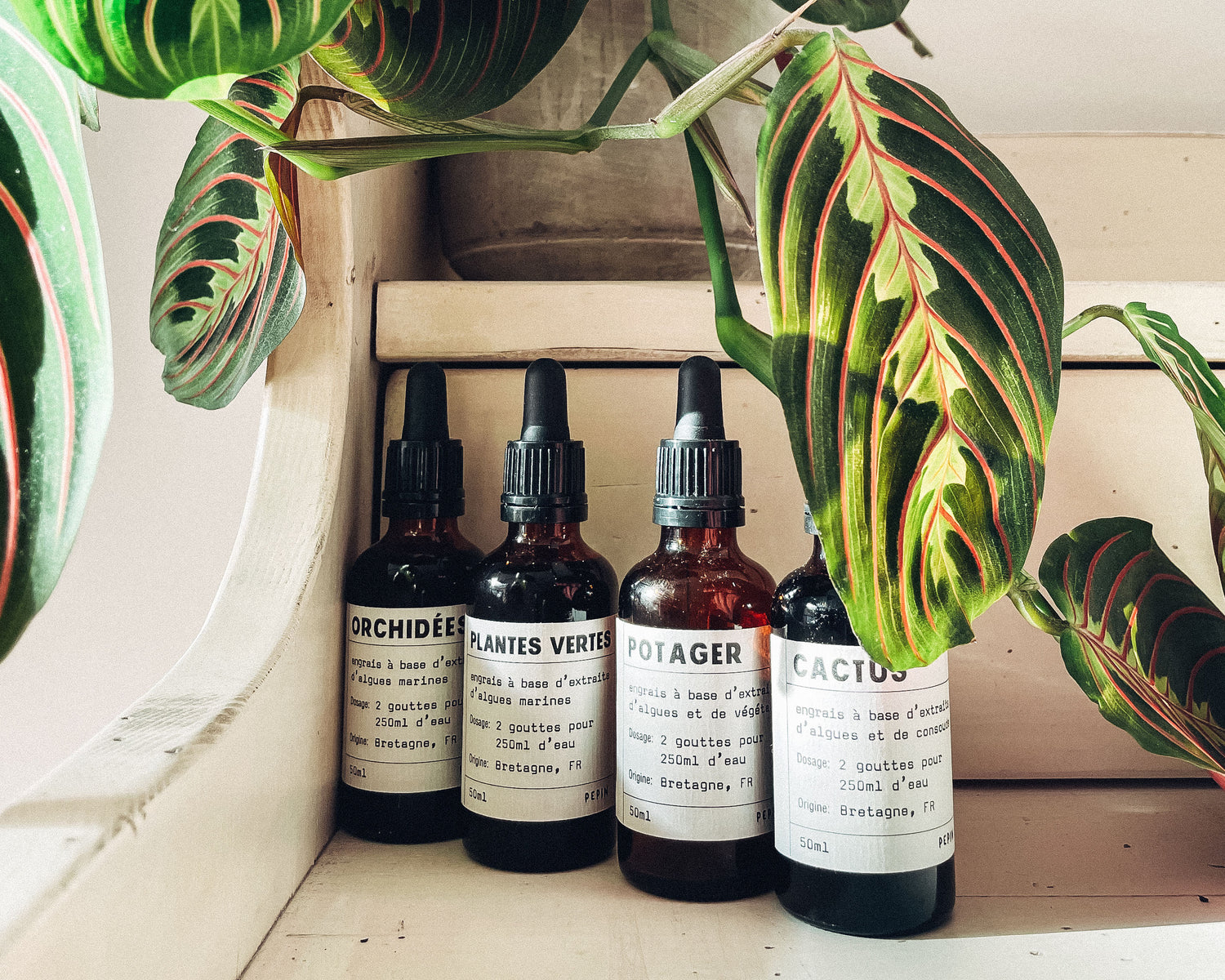Owning indoor plants can be a confusing business! It is not always easy to anticipate their needs and to react well when we realize that they are going badly. Is it a water problem? fertilizer? A pest attack? Bad exposure? The reasons can be multiple, and it is impossible to cover everything in one article. Let's focus today on the subject of fertilizers.
NPK fertilizers
Most houseplant fertilizers contain a mix of macro and micronutrients. The three main macronutrients are nitrogen (N), phosphorus (P) and potassium (K). They are indicated as a ratio on the bottle. This NPK ratio tells you how much of each of these nutrients is in the container (by weight per unit to be precise). The ratio of these macronutrients in a fertilizer for green plants or for succulents is different, because each of these groups of plants has different nutritional needs.
This means that using a fertilizer formulated specifically for the type of plant you have is a must. This is the first thing you should look for when buying houseplant fertilizer. But be careful, it unfortunately very often happens that ranges of fertilizers are presented as specific, when they all have the same NPK ratio.
How to understand the NPK ratio? To simplify, Nitrogen will be used for leaf production and photosynthesis. It will allow to have leaves of a resplendent green, and a good foliar growth. Phosphorus will contribute to the creation of buds and the resistance of the plant. As for potassium, it will support flowering and fruiting (if it is vegetable or fruit trees), but also improve resistance against diseases.
Many, but not all, fertilizers also contain secondary macronutrients, such as calcium and magnesium, as well as micronutrients, such as iron, zinc, and boron. These nutrients are used in smaller quantities than the primary macronutrients (N, P and K), but they are nevertheless essential to the metabolism of each plant. You should make sure your houseplant fertilizer also contains a small amount of these nutrients, sometimes called trace minerals.
Should I choose a natural or synthetic fertilizer?
The ideal fertilizer is an organic fertilizer for indoor plants . Macro- and micronutrients are obtained naturally and not from chemicals synthesized in the laboratory. Organic fertilizers are made from plant, animal or mineral components. Symbolically, understand that a plant functions like a human body. Using a synthetic fertilizer is equivalent to an infusion of vitamins. Using an organic fertilizer instead creates a symbiosis between the plant and the life of its potting soil or soil. A bit as if you wanted to take care of your gut microbiota to assimilate the nutrients from what you eat in a more natural and efficient way.
The Different Forms of Houseplant Fertilizer
Now that you know when to fertilize your houseplants and what nutrients houseplant fertilizers should contain, it's time to dive into the different types of houseplant fertilizers to determine which one is right for you. the best.
Liquid Fertilizers: These should be used a little more frequently than granular fertilizers, but organic liquid houseplant fertilizers are our favorites. They have the advantage of being able to be better dosed, and above all, they can be diluted with irrigation water. Their distribution is therefore more uniform for the roots. Liquid fertilizers also present a reduced risk of plant burn. The other benefit of using liquid fertilizers made from natural ingredients is that in addition to providing nutrients, they also act as growth promoters. They generally contain more micronutrients, trace elements, vitamins and amino acids than other fertilizers. Which will play a vital role in the health and vigor of your indoor plants. Organic liquid houseplant fertilizers are mainly made from seaweed, fish emulsion, compost tea, worm tea, liquid bone meal, rock phosphate, herbal extracts and humic acids.
Granular fertilizers: they come in two forms: loose granules or compressed cones. Granular fertilizers are sprinkled on the surface of the soil. The cones are to be pushed into the ground to be more easily in contact with the roots of the plants. As with liquid fertilizers, granular green plant fertilizers can be made from naturally occurring ingredients. Most often, these will be dehydrated worm castings, bone meal, blood meal, sulphate of potash, limestone, rock phosphate or other ingredients of animal, mineral and vegetable origin. There are also synthetic granular fertilizers made with chemicals, but we do not recommend them for the reasons already mentioned. A quick check of the ingredient list on the label will tell you what the fertilizer is made of. If you don't see any ingredient list, it is most likely a synthetic fertilizer.
Slow-release fertilizers: Also called time-release fertilizers, slow-release houseplant fertilizers are usually chemically made. Liquid nutrients are encapsulated in a kind of capsules. This coating breaks down slowly and releases nutrients in low doses over a long period. They have the advantage of having to fertilize less often. It is certainly practical, but not very ecological.
As you may have seen, fertilizing houseplants can ultimately be quite a simple practice. If you use the right products and apply them on a seasonal schedule, your houseplants will look radiant and grow healthily for your enjoyment.


